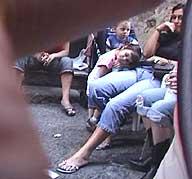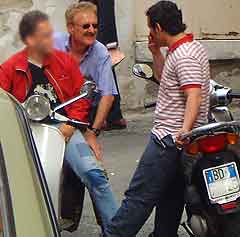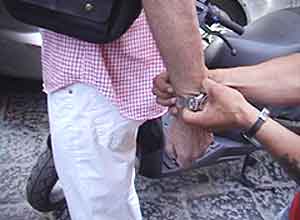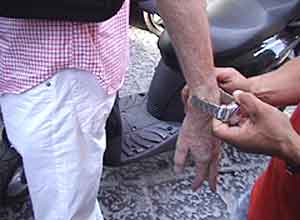
Naples, Italy— We’re introduced to AS, tattooed and be-dogged, in front of his female family members. Women of several generations sit in plastic chairs in the shady alley—shady as in dim and dubious—surrounded by lots of girls, one with an arm in a cast. The men, presumably, are mostly in prison. The boys, presumably, are out on scooters, scippatori-in-training. Two little boys, six or seven years old, buzz by on the cutest little scooter, a perfect replica with authentic speed and a full-size spine-chilling whine. If you’ve ever been the victim of scippatori, scooter-riding bandits, as we sort-of were in 1994, the beginning of our street-crime research, you never forget the sound.


When we first met DC three years ago, he and a colleague gave Bob and me a tour of this hillside hood on the backs of their souped-up motorcycles. He introduced us to AT, another of the top three Rolex thieves, who is now taking a five-year chill. When we asked, AT had copped to stealing about ten Rolexes a week. And that was in the presence of a police officer. But AT was skittish about the video camera we held in plain sight. He wasn’t worried about being identified; he said he didn’t want to show a bad image of Naples.


Like AT three years ago, AS speaks in front of Officer DC as if he were a collaborator, not a cop. At Bob’s request, he shows some methods of stealing Rolexes. One style is to grab the face and twist it. But it depends on the age of the watch. The old ones could be swiped by a single person. New ones take two. AS snaps a Rolex on Bob, who sports plastic today, and demonstrates a two-handed rip-off. I ask if I can videotape the demo from behind and AS allows it.






